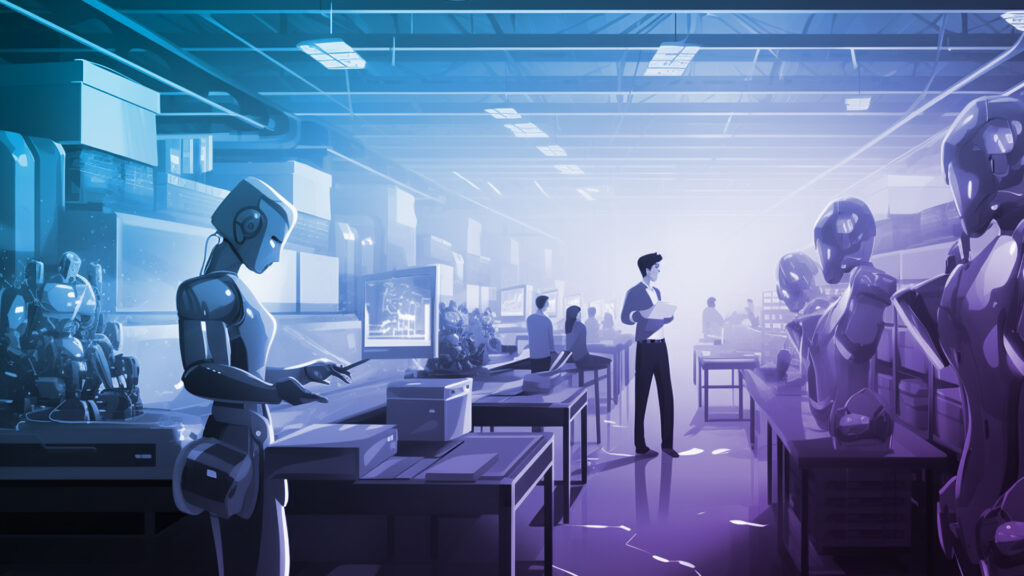The Power of Automation, AI, and Robotics in Supply Chain Management: Enhancing Efficiency without Replacing Humans
As we navigate the rapidly evolving landscape of supply chain management, one fact remains clear: the integration of automation, artificial intelligence (AI), and robotics is revolutionizing the industry. However, this...
On August 15, 2023

As we navigate the rapidly evolving landscape of supply chain management, one fact remains clear: the integration of automation, artificial intelligence (AI), and robotics is revolutionizing the industry. However, this doesn’t mean human labor is becoming obsolete. Quite the contrary, the collaboration between technology and human expertise is shaping a more efficient, resilient, and balanced future for the logistics sector.
The Impact of Technology on Supply Chain Management
Advancements in automation, AI, and robotics have significantly boosted efficiency within warehousing and logistics. These technologies streamline processes, reduce errors, and increase productivity by:
- Automating repetitive tasks: This enables the workforce to focus on more complex responsibilities that require strategic thinking and problem-solving skills. It frees up human labor from mundane tasks, thereby enhancing overall productivity.
- Utilizing AI for demand prediction and inventory management: AI algorithms can analyze vast amounts of data to predict demand trends and optimize inventory levels. This reduces the risk of overstocking or understocking, saving companies significant costs.
- Deploying robotics for heavy lifting and precise tasks: Robots are ideal for tasks that require strength, precision, and endurance. They can work round the clock without fatigue, reducing the risk of workplace injuries and boosting operational efficiency.
The Indispensable Role of Human Labor
Despite the rise of automation, the human element remains crucial in supply chain management. Humans bring skills machines can’t replicate, such as strategic thinking, problem-solving, and emotional intelligence. They oversee the technology, ensuring its proper functioning while also making critical decisions based on real-time data and intuitive understanding of market dynamics.
Humans provide the ‘soft skills’ that are essential for effective supply chain management. These include communication, negotiation, leadership, and decision-making skills. Humans
are also capable of learning and adapting to changing circumstances, which is crucial in an industry that is constantly evolving.
Collaboration: The Path to Improved Work-Life Balance
The union of automation and human labor leads to an improved work-life balance for workers. By automating repetitive tasks, employees can focus on more fulfilling duties, thus reducing burnout and increasing job satisfaction.
Automation takes care of the repetitive, mundane tasks, allowing humans to focus on tasks that require creativity, critical thinking, and interpersonal skills. This not only improves job satisfaction but also enhances the overall performance of the supply chain.
Real-Time Inventory and Status Visibility
The pandemic has underscored the importance of real-time inventory and status visibility across warehouses. This global visibility enables retail manufacturers and logistics providers to optimize labor strategies by:
- Predicting demand accurately: With real-time inventory visibility, companies can predict demand more accurately, thereby avoiding overstaffing or understaffing.
- Tracking product movement in real-time: Real-time tracking allows for swift decision-making, as companies can immediately respond to changes in demand or supply.
- Identifying bottlenecks promptly: Real-time visibility enables companies to identify bottlenecks in their supply chain promptly, allowing for proactive problem-solving.
Building a Resilient Supply Chain
For manufacturers and logistics companies looking to improve their warehouse operations, consider these steps:
- Invest in automation and AI technologies that align with your business needs: These technologies can significantly enhance efficiency and productivity.
- Train your workforce to effectively collaborate with these technologies: Proper training ensures that your workforce can effectively use these technologies, maximizing their benefits.
- Regularly analyze your supply chain data to identify areas of improvement: Data analysis can help you pinpoint inefficiencies in your supply chain, allowing you to make informed decisions about where to invest resources for improvement.
- Prioritize transparency and real-time visibility in your operations: Transparency fosters trust among stakeholders and enables swift decision-making.
The fusion of automation, AI, robotics, and human labor presents an exciting frontier for supply chain management. Embracing this blend not only boosts efficiency but also builds resilience in the face of unforeseen challenges. It’s an investment in the future, offering both short-term gains and long-term sustainability.








